“Del bello ideale” stands as emblem of an infinity research towards a harmonic, divine and ideal dimension. The title of the exhibition establishes itself as a sort of sweet summary of Giulio Paolini’s artistic work, through the exposition of some of the main artwork of his whole production, until a few recent ones.
The exhibition takes place at Fondazione Carriero (26.10.18 / 10.02.19), which dedicates and re-elaborates Paolini’s work through a collaboration handled by Francesco Stocchi and also through the participations of the set designer Margherita Palli, in order to create scenographic operations to permit an open dialogue between the artworks and the public, with a more introspective and organized view.
Fundamental is the structure of the exhibition, which incorporates the whole work of the artist, shared through three main thematic nucleus, which are the basic cornerstones of explanation and argument of the exposition path but also essential points for the entire research of Paolini.
The nucleus intercedes in a un-chronological relation, individually organized inside of the space but in a continuos, wide and related dialog.
The first fulcrum is about the theme of the “Portrait and Self-Portrait”, a very close argument to the artist, a big deal to come across as study and research that brings to a totally knowledge, until the possibility of negation, which for Paolini means, the subtraction of the presence of the artist in the artwork.
Progressively comes the theme dedicated to the measurement, “On the Surface”, which develops the analysis about the prospective in his multiple declinations, as the horizon line, the reflection or the repetition as mediums of analysis of the space and the time.
Finally, “One of two”, that means the exploration of the relation that stands between the Myth and the Classicism, as infinity memories and emblems of beauty, that brings to an other-worldly reality, raising in the spectator a metaphysic emptiness.
Giulio Paolini’s thought, in fact, stands of a real and metaphysic reflection on the entire person, reflected in his own artistic creation, suspended and veiled between the emptiness of the space and the fullness of the shadows. His own presence lives in a heavenly but at the same time analytic, measured, structured dimension.
Extremely linked to a “matteric artistic manner”, his personal artistic structures consist of an elaborated mental process and a contextual application, keeping as unifying cause the gesture, the material, the elemental shape as the simple, emotional and human thought, elements of tension for a thought pointed toward the evolution.
These elements shake extremely structured thoughts of research and analysis, symbols of Paolini’s philosophy as well as synthesis and origins of his work. That reveals as the gesture precedes any figure of representation.
A crucial dialog with Giulio Paolini coincides with a more deep discussion about the theme, that “Del bello ideale” self talks about, until more wide questions in order to get a more intimate point of view through some direct arguments from the same artist.
Getting more deeply in the subject of the contents of the exhibition, stands out as fundamental question, Paolini’s decisive behavior in front of the triadic components that stands in-between the creative process, that means the relation among the artist and the artwork, with the public, and the artwork with the public.
Giulio Paolini came through his extreme formal elegance to an aware, desired and quite necessary “detachment”, regarding the authorial fundamentals, putting himself in an opposite position towards many artistic figures, which according to them the “artistic manner” flows into the maxim “temptation to the autobiography” as leitmotiv of a “presence obsessions”.
Paolini choses for a “subtraction”, eluding every author’s entities, preferring impalpable dimensions, doubling the possibility of approach and understanding and no matter how his older elaborating process became more programmed and composed, is also affected by the origins of aleatory and casualty which the same artist considers as additional component, almost planned:
“Going backwards for a subtraction to the point of starting, or recovering the direction towards the end point, we’re getting closer to the same finish line. The evocation of Nothing (where everything vanish until the loss of the role of the author), let space to causality and an “out-control”, something unexpected but at the same time belonged to the implicit “rule” of the artwork.”
Going on, we meet another highlighted particularity about the expositive themes, which brings to evidence the relations between Mind and Body, sometimes a conflicting relation for him, as a person, as an artist.
A deep reflection about the universal and human thought, from the dividing gesture until the immense historical theory.
The Art History, projects itself in the multiple artworks of Giulio Paolini and they claim the same love and passion that lives in the fascination for Paolini for the Myth. A sacred or deconsecrated Myth, or as testimony, resurgence, memory or ruins, the relationship with the Holy is very important for Paolini.
His poetry about matters talks about apparently elements became silent, inorganic, immobile but aware of his “being” and being always subject, but at the same time, the concept about the his body as artisti medium, because also very close to an artistic period in which the involvement of the body is very important, Paolini keeps a suspended opinion:
“Everything is a ruin, past or future: everything marvelously vanishes, as i said, showing us the declining but indissoluble root of what we see.
I affirmed many times- and i like to repeat it – that when i was nineteen, after figuring out my plan, i “took my vows”. The faith follows always different paths, but originally the same.”
Giulio Paolini is very linked to the material and the concept tied with the action, to the declivity of the elements, to the intellect that puts into words the measures, as also the feelings and the holy moments.
An artistic period especially interested in living the art directly leaving unique and limited testimonies, the invitations becomes memory to frame, artist’s posters becomes real artworks, artist’s books become sculpture: becoming nowadays very “rare” and “researched” material to collect:
Paolini, therefore, doesn’t escape from the beginning, flowing into in the inevitable relation between the testimony
“Living in exile: art and religion share parallel paths, waiting for expecting examinations that they usually postpone to an unlimited “after”.
As you know, i was born as a graphic designer beyond the walls of the Academy of Fine Arts: i’m too strictly tied to the pencil, to the paper to betray my “ancient” education. In any case, without giving up to getting closer to the modern techniques nowadays.
Finally, one of the most identifying element of Giulio Paolini is the word. In every details of his works resound the cure for the language: from the title until the word-sign.
His “being poetical” converges in his work, his refined words sound almost lyrical next to his artworks that are so particular, suggestive, soft.
The language dimension suggests and creates multiple mind-games and questions, until reaching one of the most fascinating question about language philosophy by Ludwig Wittgenstein: “The limits of my language mean the limits of my world”.
So, Paolini doesn’t find any obstacles in living the world of the word thinking of the infinity as eternal possibility:
“About Wittgenstein’s words, i’d like to specify that my “own world” doesn’t exist and at the same time i don’t feel a lack of it: i find it already enough the real world’s signals in order to attempt, with all my strength left, to take distance for an acceptable cohabitation.


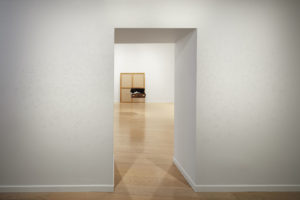
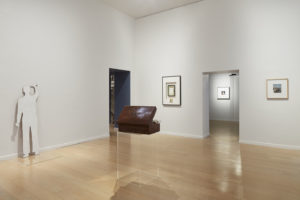
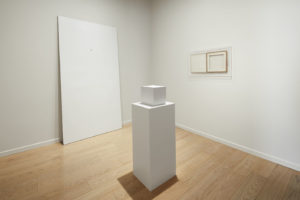
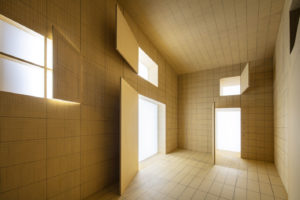
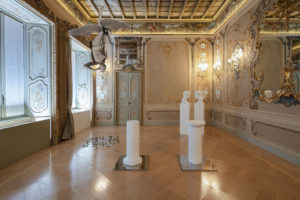
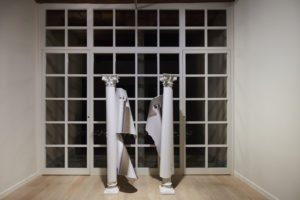
For all the images:
Giulio Paolini
del Bello ideale, 2018
installation view at Fondazione Carriero, Milano
Ph. Agostino Osio
Courtesy Fondazione Carriero, Milano
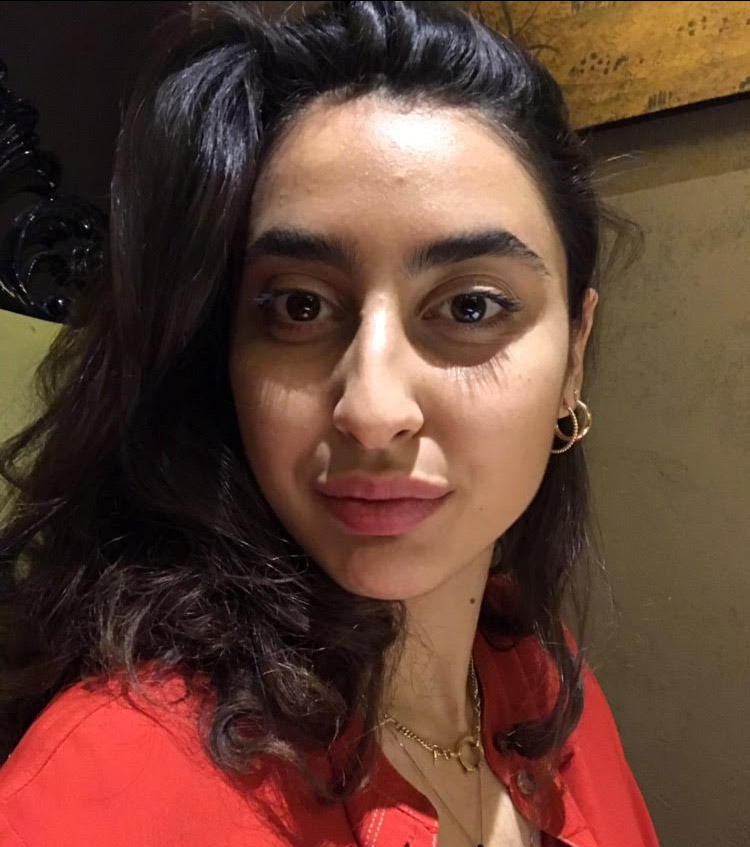
Vanessa Ignoti (1993) graduated from the Fine Arts Academies of Venice and later Milan, respectively in Decoration and Cinema and Video, went through a course of studies and interest from publishing to New Technologies. With experience in the management and organization of exhibitions and art projects, she focuses her interest on communication and theory of art.





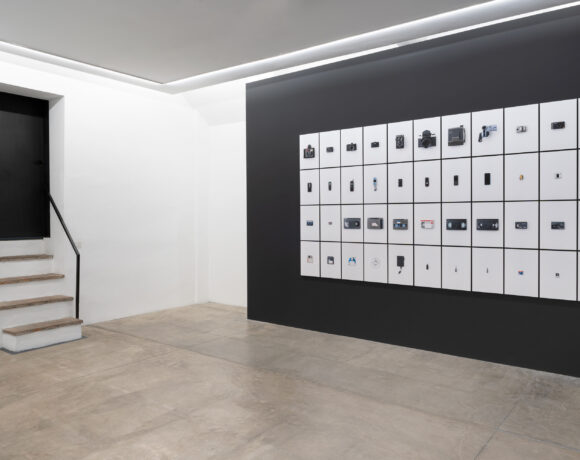

NO COMMENT